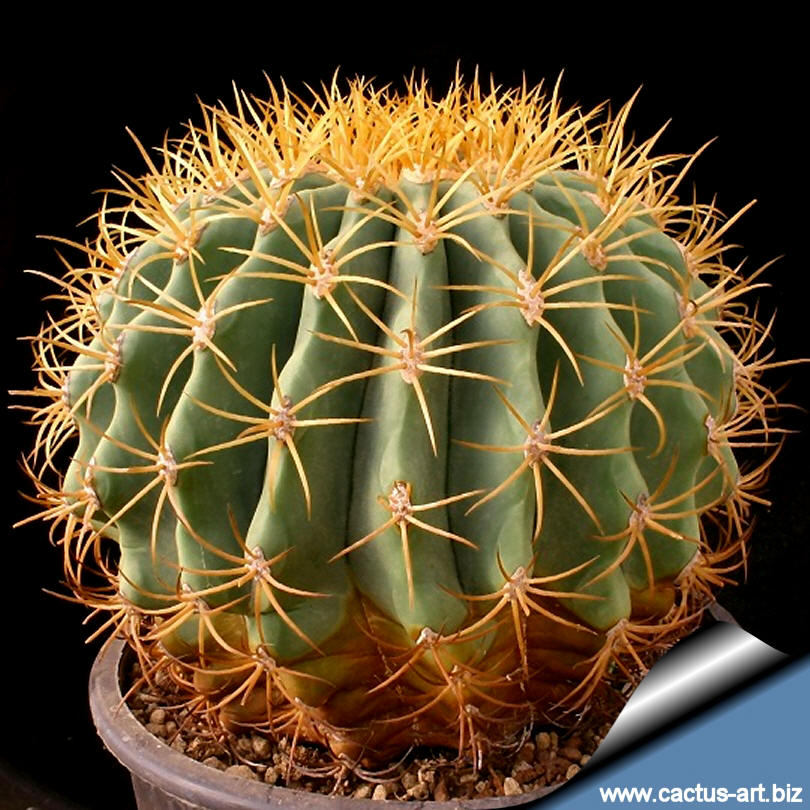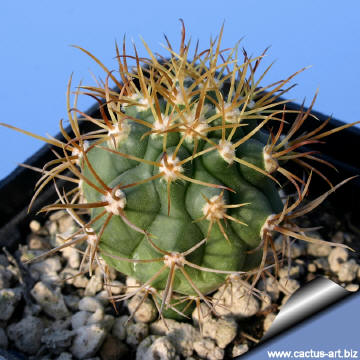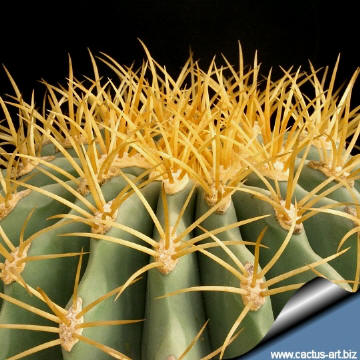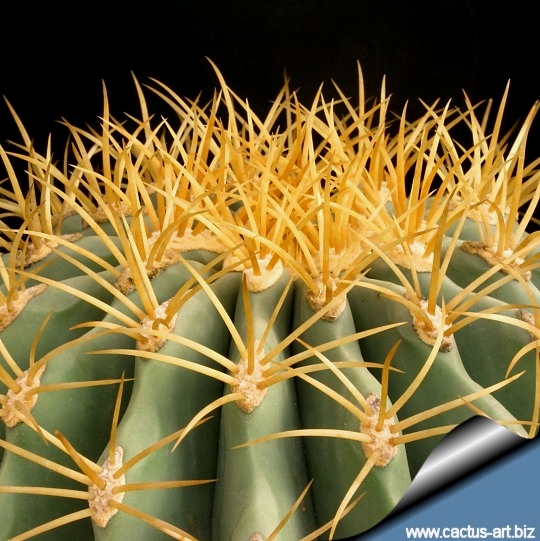|
|
|

F. diguetii var. carmenensis is one of the more rare and priced of
all cacti.
This variety "only" reaches a height
of about 1m.
|
|
Description:
Contrarily to the common F. digueti that form a huge, solitary column up
to 4m tall the variety carmenesis only reaches 1m of eight. Apart for
the reduced size and slowest rate of growth this plant looks almost
identical to the standard form.
Stem: Shortly cylindrical that never grows up to to 40 cm in
diameter and 100 cm in height, but usually much smaller.
The young specimens are often globular rather than
flattened.
Ribs: Slightly tuberculate and wavy .
Mature plants have 25 to 35 ribs; 4 to 8 spines, almost all alike, not
ringed or hooked, up to 7cm long.
Spines: The spines in the juvenile plants are somewhat heavier than in
the standard F. diguetii, they vary from 4 to 8 (often up to 10 in
juvenile specimens), clear yellow or sometime reddish or brownish,
almost all alike, subulated, not ringed or hooked, slightly curved
outward, up to 7 cm long (but usually shorter).
Flowers: The fiery reddish to orange flowers are about 4 cm long
and bloom from March to May.
Blooming season: Flowers from March to May.
Fruit: up to 3 cm long.
Seeds: Glossy brown, irregular, 1,5 mm wide.
|
 |
 |
|
Advertising
|
|
|
|
|
Family:
Cactaceae (Cactus
Family)
Scientific name:
Ferocactus diguetii
var. carmenensis (G.E.Linds.) F.Wolf &
R.Wolf
In: Cactus & succ. Jour 27: 167,fig. 156, 1955
Origin:
It is an islands
endemic from Gulf of California, Mexico. (Baja California, Carmen island)
Conservation status: Listed in
CITES appendix 2.
Common Names include:
Synonyms:
|
|
|
|

This species has has no ringed or hooking spines. |
|
Cultivation: Plants are very slow
growing to start but are easy to grow and require little care once they
have reached a nice flowering size. It is suited for any rich,
well drained soil in full sun troughout the year.
Pot culture: grow best
in a fairly roomy, well-drained container filled with a porous cactus
soil mixture that doesn't contain too much humus. To insure robust
plants water and fertilize during the aestival growth cycle, this plant
need plenty of water (indicatively to about once a week) But needs to be
avoided wetting the bodies of these plants while they are in sunlight. A
wet cactus in the sun light can cause sun burning which can lead to
scares or even fungal infections and death. In winter keep completely
dry at 10°C this usually aids in maintaining a healthier plant, but can
tolerate sporadic light frost.
Propagation: Seeds are the only
way of reproducing.
Photo of conspecific taxa, varieties, forms and cultivars of
Ferocactus diguetii.

 |
|